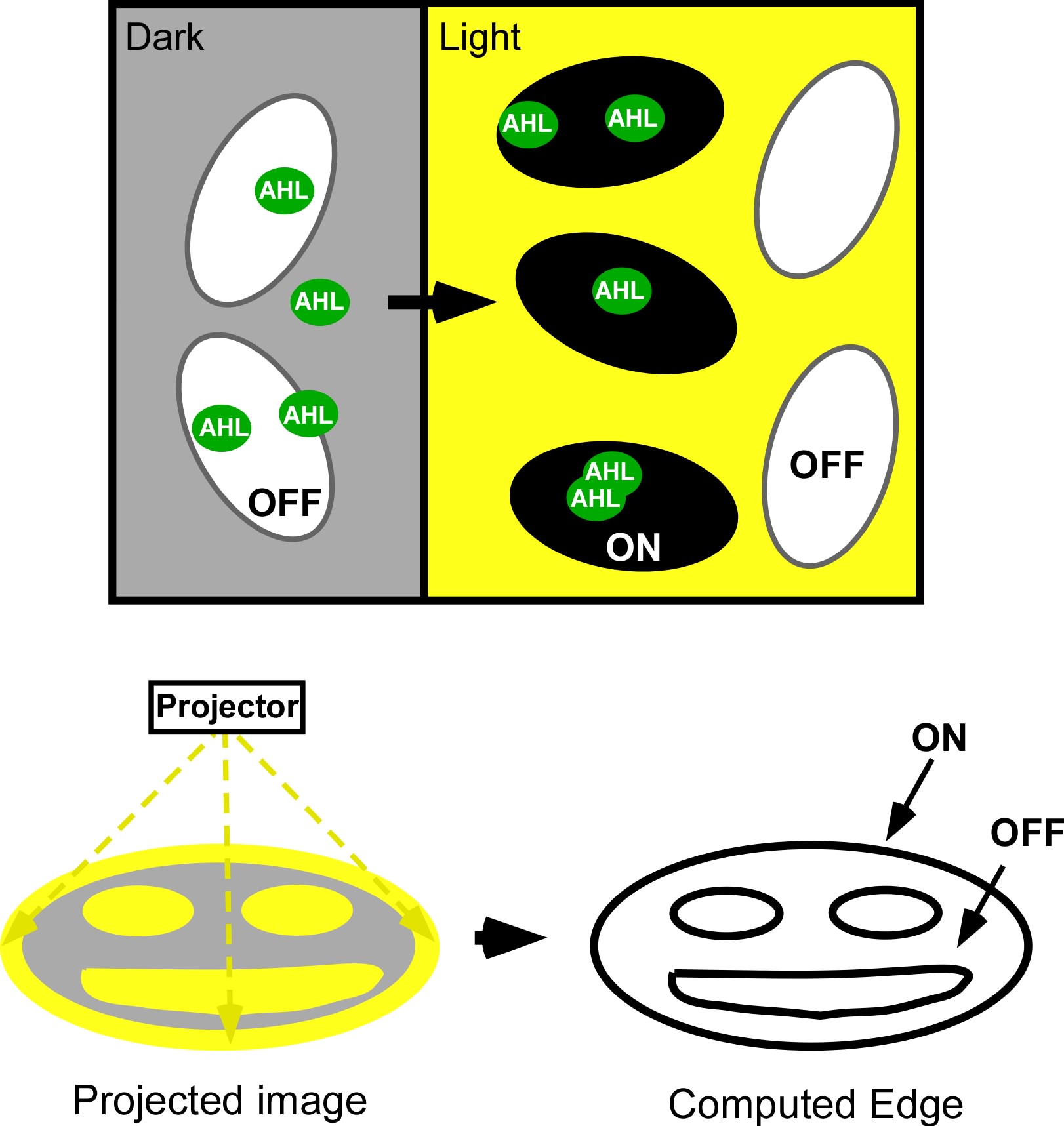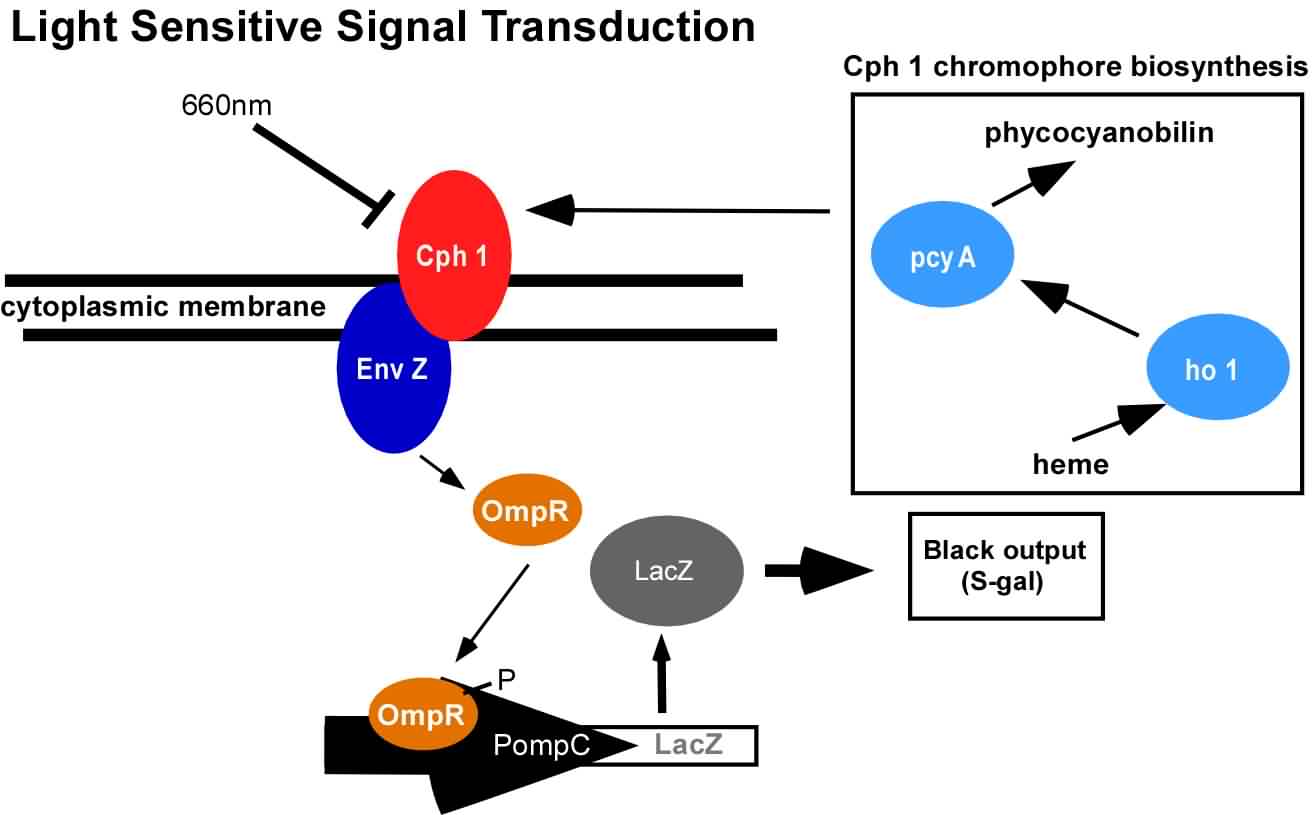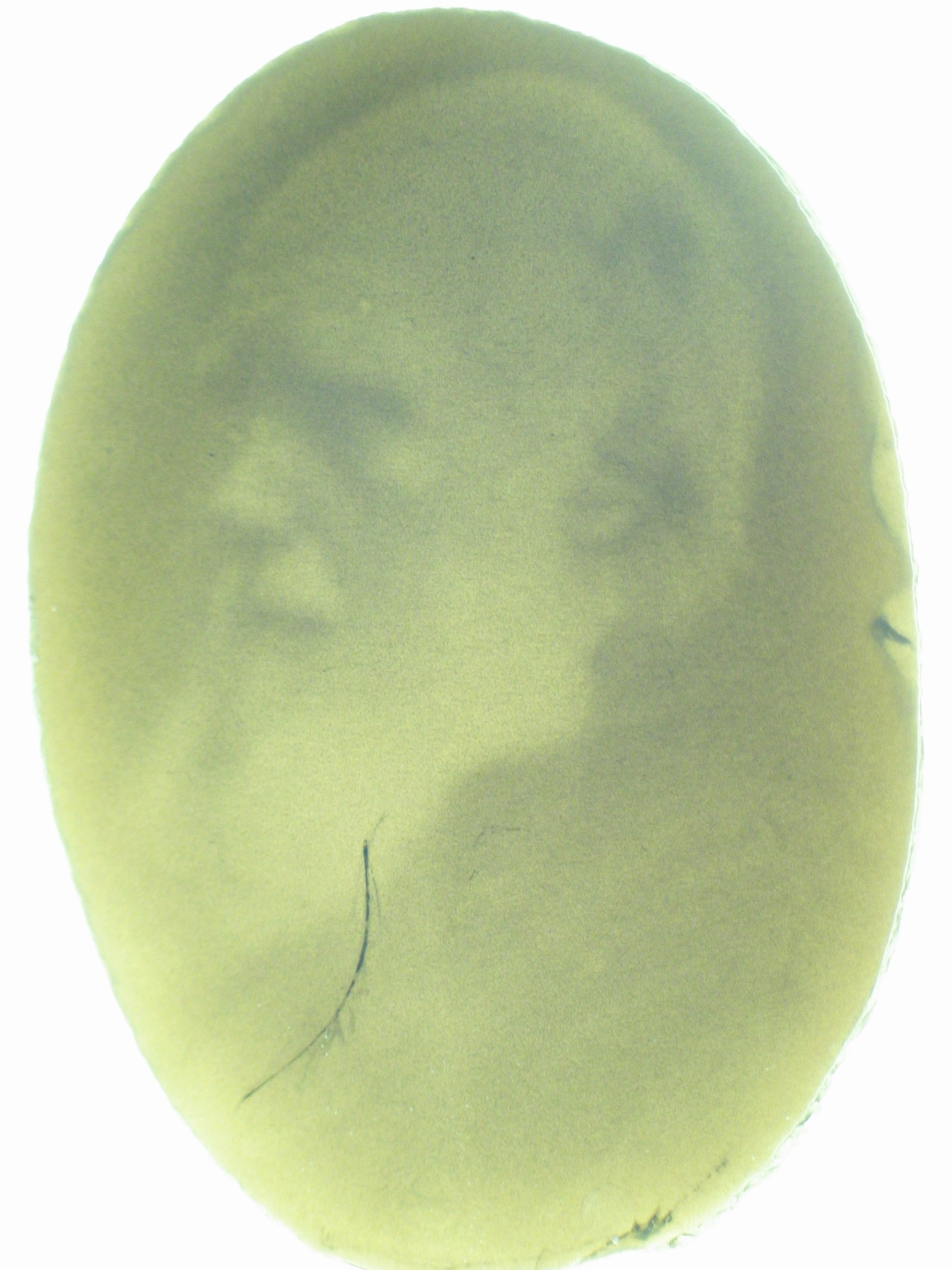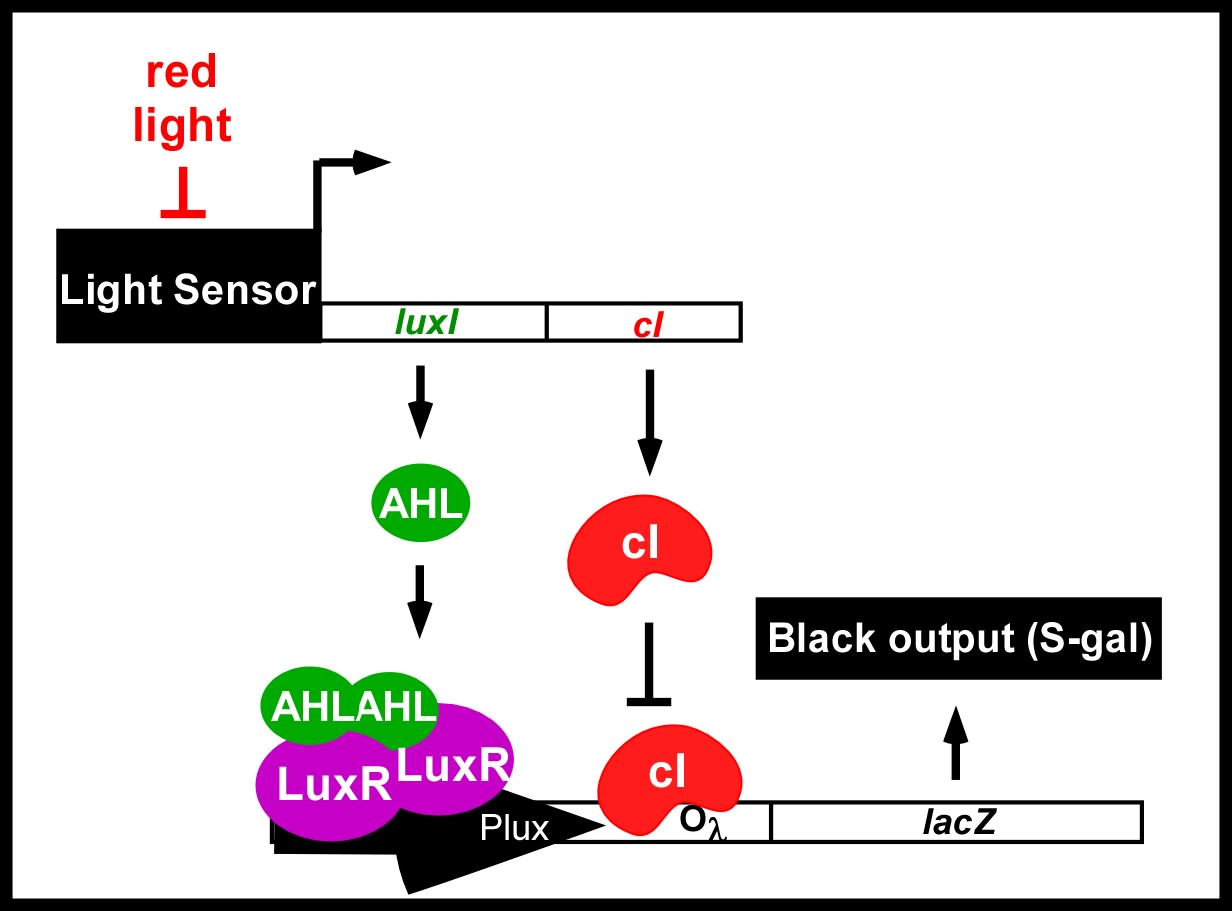University of Texas 2006
From 2006.igem.org
Members
The UT Austin team is:
- Aaron Chevalier
- Eric Davidson
- [http://openwetware.org/wiki/User:Jeff_Tabor Jeff Tabor]
- Laura Lavery
- Matt Levy
- [http://www.mine-control.com/ Zack Booth Simpson]
Advisors:
- [http://ellingtonlab.org/ Andy Ellington]
- [http://polaris.icmb.utexas.edu/home.html Edward Marcotte]
Edge Detector
For the 2004 Synthetic Biology Competition, our joint UT-Austin/UCSF team designed a genetically encoded edge detection device. In our system, a community of genetically identical E.coli would function as a massively parallel computer capable of calculating the light/dark boundary of an arbitrary two-dimensional image.
An obvious hurdle in the implementation of this system was genetically encoding light detection in an easily manipulate-able and tractable system like E.coli. To accomplish this, we used a synthetic part engineered in the Voigt lab. This part, Cph8, ([http://parts2.mit.edu/r/parts/partsdb/view.cgi?part_id=5302 I15010]) is an engineered fusion between a cyanobacterial light sensing phytochrome (Cph1) and an E.coli transmembrane histidine kinase, (EnvZ). 660nm light causes an isomerization in the Cph1 domain of the chimera which inactivates the histidine kinase acitity of EnvZ. When EnvZ is inhibited, a phosphorelay cascade which activates transcription from the OmpC promoter [http://parts2.mit.edu/r/parts/partsdb/view.cgi?part_id=3910 R0082]) and inhibits transcription from the OmpF promoter ([http://parts2.mit.edu/r/parts/partsdb/view.cgi?part_id=3915 R0084]). We showed that when this system is expressed in E.coli, it is possible to transform each cell on an agar surface into a decision making pixel capable of deciding whether it is in the light or dark. The community of cells is therefore capable of genetically reproducing a light image.
This was the first step in engineering the edge detector. We have now connected the light-regulated system to the entire edge detection circuit ([http://partsregistry.org/Part:BBa_I15022 I15022]) the schematic and operation of which are shown in the figures below.

A light image is projected onto an agar plate of genetically identical E.coli. Cells residing in dark areas are repressed by CI repressor, but produce a diffusible inducer, AHL. Cells in illuminated areas do not express CI repressor, and are therefore sensitive to AHL. If they neighbor a dark area, they will be activated by locally diffusing AHL. In this way, only cells at the light dark boundary express a reporter.
Links
If you'd like to take your own pictures, check out the page on [http://openwetware.org/wiki/LightCannon how to build a light cannon]


